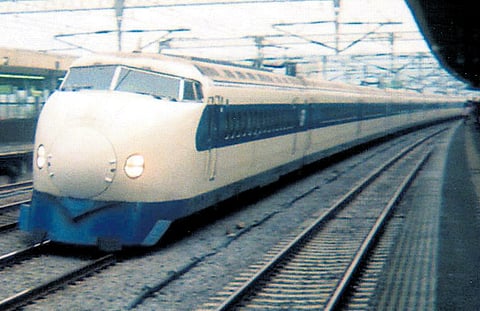

High-speed trains have revolutionised surface transportation, let alone railways around the world. A high-speed rail (HSR) network utilises trains that run significantly faster than those of traditional rail, through an integrated system of specialised rolling stock and dedicated tracks. Commonly, this network is built to handle speeds in excess of 250 kmph, and are mostly used for swift, safe, and comfortable passenger travel.
The 21st century has witnessed a surge in railway innovation of the earlier decades. High-speed trains became the stuff of legend after the first ‘bullet train’, or what the Japanese call – “Shinkansen” – was introduced. It was Japanese engineer Hideo Shima’s dream, which materialised as the 515.4-km Tokaido Shinkansen in 1964, which has today expanded to cover 2,830.6 km of lines, with speeds in the range of 240-320 kmph.
Subsequently, many countries developed their own high-speed rail networks, some of the prominent ones being Train a Grande Vitesse – TGV (France), Intercity Express – ICE (Germany), Alta Velocidad Espanola – AVE (Spain), Korea Train Express – KTX (South Korea), and China Railway High-speed – CRH (People’s Republic of China).
The CRH in China is the world’s longest high-speed network, spanning 45,000 km. Also, the Shanghai Transrapid in that country is the fastest train in the world, having reached a staggering 501 kmph. In India, the fastest train at present is the Vande Bharat Express, which can reach speeds of 180 kmph. But in November last year, Railway Minister Ashwini Vaishnaw stated that the first bullet train section in the country – a 50-km stretch between Bilimora and Surat in Gujarat – would be completed in August 2026.
Electro-magnetic power
A technological breakthrough, already in the works since the late 1800s, brought about this churn in rail transport. Magnetic levitation, and maglev, is a system wherein a vehicle runs levitated from the guideway by using electromagnetic forces between superconducting magnets onboard the vehicle and coils on the ground. Maglev was the disruptor for HSR, which operates accor-ding to the principles of electromagnetism. These trains float over guideways, as against old steel wheel and track trains. This eliminates rail friction, allowing the trains to touch incredible speeds, while also being supported by a futuristic aerodynamic design.
Besides, there is far less noise and vibration, resulting in fewer mechanical breakdowns. There is no conventional train engine to speak of as well. The basic feature of magnets is that opposite poles attract and like poles repel each other, which ultimately creates electromagnetic propulsion. The pull from electromagnets is temporary, based on the power supply, which creates a magnetic field that further helps run the maglev train.
Apart from a large electrical power source, metal coils line the guideway or track, while large guidance magnets are attached to the underside of the train. All these have to work together. The guideway is the magnetised coil running along the track. It repels the large magnets on the train’s undercarriage, allowing it to levitate 1-10 cm above the guideway. Once the train is levitated, power is supplied to the coils within the guideway walls to create a unique system of magnetic fields that pull and push the train.
The electric current supplied to the coils in the guideway walls is constantly alternating to change the polarity of the magnetised coils, which causes the magnetic field in front of the train to pull it forward, while the magnetic field behind adds more forward thrust. Pull the plug on power, and the train comes to a stop.